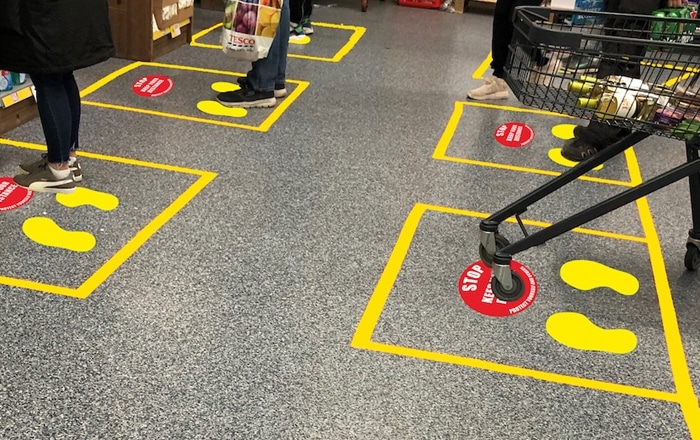Good signage and labelling can play a seminal role in an effective anti-coronavirus (COVID-19) strategy during these difficult times for tens of thousands of UK businesses, says Jim Roberts, product manager, Beaverswood.
Employers have become accustomed to managing illness such as flu and colds in the workplace, particularly in the long winter months. However, the unprecedented coronavirus outbreak is causing many to urgently revisit their current policies and practices to ensure continued worker health and safety. And this includes the use of signs and labelling as part of an effective plan.
Health and safety law says employers must take sensible steps to protect workers and that includes adopting reasonable precautions by following Public Health England’s guidance for your sector. The HSE is also working closely with the DHSC, PHE and other government departments to provide support when it’s needed, including technical advice on the protection of workers at risk during these extraordinary times.
But the workplace is among the riskiest environments for people in these parlous times.
Despite more and more of us having to work from home, the sheer volume of people required to carry out key responsibilities and tasks under one roof in places such as hospitals, care homes and healthcare facilities, warehouses, depots and schools and other critical facilities, focuses the mind on the paramount importance of hygiene to reduce risks and limit the spread of contagion.
For some organisations, safety can slip under the constant pressure to create a more efficient, better service for customers. But under UK law, employers must observe a duty of care to their workforce: they must identify the health and safety risks each person faces at work. Generally speaking, this comes into force when a person or group of people do something that might reasonably harm somebody, which includes the possibility of exposure to coronavirus.
In the context of the workplace, duty of care is legally binding on an employer. Put simply, owners and operators must abide by what the law refers to as a standard of reasonable care – and this applies to any work-related matter that could injure someone in the warehouse environment. This is why a site risk assessment must be immediately undertaken – to identify such issues is vital. If an employer neglects their duty of care, and if a problem arises, an affected employee may be able to proceed with a claim of negligence at a later date with all the associated ramifications of financial penalties, legal costs and reputational damage.
Holistic approach
Adopting a holistic approach to the health and safety management by considering the task, the working environment, equipment used and the person carrying out the task, is recommended good practice and would be seen as a sensible first step at the moment.
The key part of managing risks is the risk assessment – the effective process of evaluating risks to workers’ health from workplace hazards in order to determine the measures required to eliminate or reduce the level of incidents. The risk assessment should identify the key health and safety priorities within and around the warehouse so that efforts can be concentrated on these priorities.
If and when a worker succumbs to illness, what can we do to prevent further spread? Several preventive measures and steps can be followed to highlight and reduce the spread of the virus including proper hand hygiene – wash hands thoroughly to prevent the spread of infection – don’t share items and use common sense: adhere to proper infection/exposure control precaution.
In these difficult times, good signs and effective labelling practices can be deployed to protect, advise and inform in the workplace, helping to keep people safer and healthier. Properly located and suitably deployed, cautionary signs, for example, can be among the first line of physical defence in the battle to alert people to the dangers and amplify public health messages in high-population places such as warehouses, fulfilment centres, call centres, commercial offices and retail outlets with clarity and resonance.
Strategy
It’s important to recognise that each workplace is different with its own unique set of risks, but the early adoption of comparatively simple measures can not only be relatively inexpensive but highly effective in mitigating risk. Quality signs and labels can also be integrated with other technologies such as sensors, CCTV, safety gates, cautionary guardrails and associated equipment to effectively augment routing systems designed to keep people safe and secure.
Clearly, it’s going to be difficult for everyone to comprehensively mitigate against coronavirus threat in the weeks and months to come but a sound strategy can help to minimise the risks. It’s also important to tailor your decision-making to meet your specific needs – the one-size fits all approach won’t always work in an environment where the balance between productivity and people’s health and wellbeing is paramount. Think about your requirements in terms of quality, reliability and performance, and consider also how your supplier can add value in helping you understand the role that signs play in securing a safer tomorrow.











